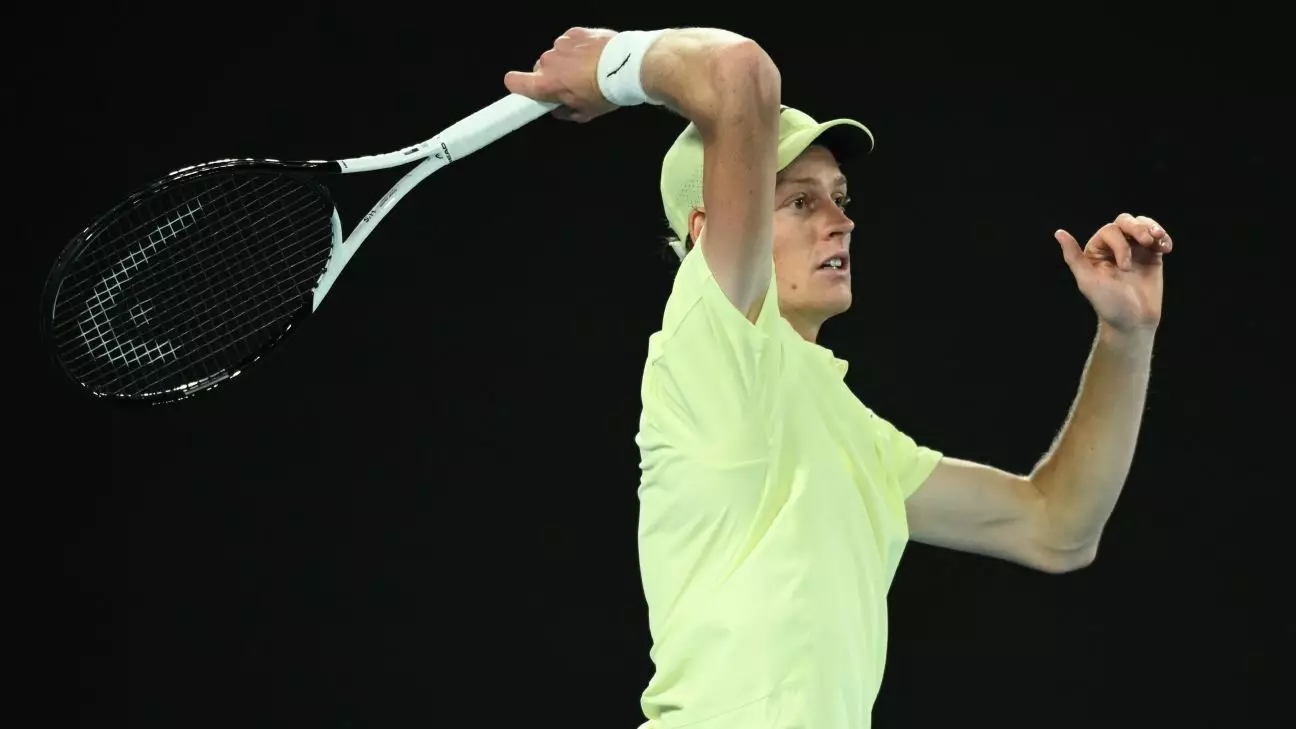In recent months, the tennis world has been rocked by high-profile doping cases that have not only thrown athletes into the spotlight but also sparked a crucial dialogue about the integrity of the sport. Jannik Sinner, a young and rising talent, recently completed a three-month ban following a settlement with the World Anti-Doping Agency (WADA). His situation raised eyebrows, as it was determined that a banned anabolic agent, clostebol, entered his system inadvertently through massages. This incident, alongside Iga Swiatek’s brief suspension for a different banned substance, has ignited a wave of concern among players regarding the pitfalls of unintentional doping violations.
The fear of positive drug tests is not unfounded, as athletes are now more cautious than ever. The International Tennis Integrity Agency (ITIA) revealed a noticeable uptick in inquiries from players seeking clarification on supplement safety and medication compliance since the fallout from these cases. Anticipating this growing concern, the ITIA has committed to enhancing its advisory role, striving to offer players, coaches, and medical staff the resources necessary to navigate this treacherous landscape effectively.
The Balance Between Strictness and Fairness
Sinner’s case has bred suspicion and discontent within the tennis community. Notably, esteemed figures like Novak Djokovic and Nick Kyrgios have vocalized their frustrations, questioning whether equitable treatment exists for all players. While some perceive Sinner’s handling by anti-doping authorities as lenient, others challenge this view. Djokovic lamented being kept uninformed about the situation, while Kyrgios expressed outrage over the potential perception of favoritism. Meanwhile, Serena Williams sparked further debate by alluding to her own hypothetical punishment had she faced a similar circumstance, suggesting that expectations of consistency in disciplinary actions have yet to be met.
The ITIA has remained steadfast in its assertion that every case is approached with a commitment to honesty and fairness, devoid of bias related to an athlete’s prominence. Yet, the perceived disparities in how cases are managed remain contentious, raising the question of whether the rules and regulations governing doping are being enforced uniformly across the board.
A Closer Look at Athlete Mentality
As Sinner prepares to return to the court, aiming to transition seamlessly back into competitive play, he faces the true psychological aftermath of this controversy. While he may have emerged from the ruling unscathed, the mental demands of competing under scrutiny will weigh heavily on him. Sinner himself acknowledged the challenges of readjusting following his suspension, recognizing that his initial matches back on the court will test his resolve and resilience more than ever.
Experienced athletes like Rafael Nadal have voiced support for Sinner, emphasizing the need for players to focus on their performance rather than the surrounding noise of controversy. Nadal’s perspective serves as a reminder that the integrity of the sport should prevail, but it also calls into question how athletes internalize these experiences. The pressure to succeed amid controversy can create a burden, forcing players like Sinner to confront internal doubts while managing public perception.
Shaping the Future of Tennis Integrity
The impact of doping cases extends far beyond the individual athlete; it influences the fundamental fabric of professional tennis. As the sport grapples with maintaining integrity, both players and governing bodies must remain vigilant in their commitment to transparency and fairness. By prioritizing a collaborative approach to education and resource provision, organizations like the ITIA can help to prevent further incidents while empowering athletes to take charge of their health and compliance.
In doing so, the tennis community can foster a culture of respect, one that emphasizes not only the competitive spirit of the game but also the essential principles of ethics and honesty. The path forward will undoubtedly require ongoing dialog and reform across all levels of the sport. As we witness a new generation of players stepping into the spotlight, the lessons learned from these past controversies may serve as both a cautionary tale and vital guidance, ultimately paving the way for a more resilient and principled future in tennis.


Leave a Reply